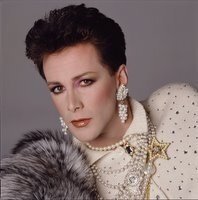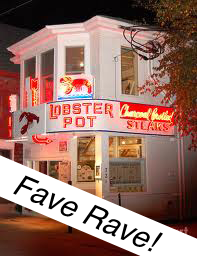Sybil Bruncheon’s Tales for the New Year!... A New Year’s Gathering of the Bingham Lake Spinsters… for LADIES ONLY!
/Boys and girls, did you know that in olden times, it was considered wrong, just plain wrong for a single lady to go out into the world without a man to “escort” her? The excuse made by men like your grandpa was that the lady might be attacked, robbed, or even pinched on her bottom… but there was also the reason that a lady by herself or with only other ladies walking around or eating lunch in a restaurant might be a naughty lady who wanted to make friends with sailors in an alley for money, or jewelry, or chocolates, and that would be wrong, just plain wrong!
So… in those old days, there were special clubs or “societies” where single ladies could go and be protected together without the bother of men annoying, bossing, or pinching them. This Bingham Lake Spinster’s Retreat was one of them. Here the ladies are visiting together on New Year’s Eve of 1898 for a lovely celebration. The ladies had come from all over the country to be with “their own kind”. (Photo courtesy of the Pinella “Pinky” Thompson Studio)
They are from left:
1) Miss Lilia Cermunkle (Detroit Lakes, Minnesota) Interpretive dance instructress to local children (girls ONLY!). She made quite a reputation for herself by staging recitals and plays without any dialog, only dance. She produced her annual Christmas Nativity stories with children dancing the roles of the Holy Family, the three Wise Men, the Heavenly Host, the grumpy stable owner and his snarky wife, and various sore-afraid shepherds, villagers, tradesmen, and barn animals. And no one ever seemed really concerned that these were all-nude performances.
2) Miss Aganantha Flunce (Junket Corners, Ohio) Proprietress of the Junket Junk & Treasures Shoppe, a local charity store of antiques, housewares, pre-owned clothes and personal hygiene items to raise money for the Junket Corners Frisky Foundlings Petting Zoo. She was personally responsible for building the special pavilion for abandoned Easter bunnies, ducks, and chicks as they grew into adulthood.
3) Miss Penny Pertwalter (Hobb, Iowa) Creator of the revolutionary Penny’s Penny-Wise Pounds-Away Diet Plan. In a time when people barely discussed weight control of any kind, Pertwalter actually studied the unfolding sciences of food chemistry, meal scheduling, specialized exercising, and anatomical and hereditary predilections to obesity. Her conclusion?... regular vomiting.
4) Miss Cynthia Tialor (Hudson, New York) Owner of Tialor’s Tailoring Temple; a couture level dressmaking and alterations establishment that earned such an exalted reputation among the wealthy that they would send their clothes and place their orders from as far away as New York City, 120 miles away! Eventually hiring 11 assistants from the local Thimble & Thinking Craft College, “Miss C”, as she was lovingly known by her devoted staff, actually became the go-to costume builder for New York theatre and Vaudeville impresarios and producers like Florenz Ziegfeld, George M. Cohan, Eddie Foy, and Morris Seidelmann. Her musical Noah’s Ark immortalized her.
5) Miss Prudence Hamblin (Palm Desert, Maine) Hamblin was a local odd-jobs and home-care lady who supported herself as a seamstress, cleaning lady, house-keeper, baby-sitter, jams-and-jelly maker, and as-needed marriage broker. She was particularly successful at match-making among the young persons in Southern Maine, having a perfect, no-divorce-needed reputation for over 52 years. She claimed her “woman’s intuition” was the reason, but secretly, she admitted it was Tarot cards, tea leaves, and “her magic kitty, Madam Zorina, who told her who should marry who!”…
6) Miss Katey-Ann O’Flummery (Chatham, Massachusetts) A life-long resident of Cape Cod, O’Flummery had been raised by a large family of fishmongers dating back to the Pilgrims and Plymouth Rock. She was the president-for-life of the local Daughters of the Mayflower and the Daughters of the Revolution, and she wielded her power as both with a firm fish-smelling fist. Though infamously frugal and outwardly shabby, her immense (and hidden!) fortune came from her “Cap’n Casper’s Canned Clam Chowder” Corporation… “jes reheat ‘n’ sehve!”… a million housewives coast-to-coast, had no idea a woman was Cap’n Casper from Cape Cod. She remained the wealthiest woman in New England for the last two-thirds of her life.
7) Miss Malvina Planck (Grenville Acres, Arkansas) Inveterate and unreconstructed Confederate who never believed the Civil War had come to an end. She claimed her entire life to be the secret bride of Robert E. Lee (though never consummated!). She raised sheep and used their wool to make a large and highly saleable sweaters, scarves, socks, and mittens, sold nation-wide in sundries shops. Secretly, she also spun her high-grade wool into kersey, the fabric dyed grey and used for Confederate uniforms. She had over three hundred uniforms of different classes hidden in her attic at the time of her death in 1929.
8) Miss Kelendra Grantworthy (Baltimore, Maryland) Kelendra (aka Madam Kiki and her Komedic Kock-a-Toooos) performed on the Morris Seidelmann Celebrity & Silliness Circuit throughout the eastern seaboard, from New Hampshire to Florida. Her parents, a very nice couple (he a plumber and she a 3rd grade teacher) had no idea their daughter had become, technically, a “hootchy-kootcher” employing exotic birds, balloons, and cake frosting in her “musical monologs” where she danced, told ribald stories, recited limericks, and dropped items of her fanciful costumes as she strolled around the stage in front of hooting and cheering crowds of traveling salesmen, sailors, and as-yet unmarried college boys and ruffians.
9) Miss Deborah Heismann (Crumble, New Mexico Territory) Heismann had the distinction of being the first single Jewish woman to own and operate her own business in the as-yet-to-be-admitted-to-the-Union territory of New Mexico. Her shop, carefully situated next to the train station, specialized in Native American pottery, textiles, and jewelry. In a way, she was at the forefront of the budding “local souvenir industry” before it swept the nation as a gigantic money-maker from the newly created mobile American tourist. An extremely savvy marketer, Heismann opened a café adjoining her shop, and commissioned all the restaurant china to be patterned in the same Indian geometric designs as the Zuni and Hopi pottery. Sadly, her idea for a kosher Yiddish menu didn’t succeed quite as well, and she went back to cheese burgers, milk shakes, and bacon and egg breakfasts for the travelers…
10) Miss Mabel May Millbister (Fairy Wells, Maryland) Millbister was the extremely private and understated heiress of the Dr. Millbrewster Knee & Elbow Liniment fortune, estimated at close to $8 million at the time of this photo. Her family changed the name of the liniment in its little metal tubes from their own to keep fortune hunters, charlatans, loan-seekers, and pan-handlers from their doorsteps. Mabel herself was heard to snap at people when they would ask if she was any relation to the liniment company, “My name is Mill-BISTER, not Mill-BREWSTER! Can’t you read the damn label?!”… Needless to say, over time, people gave her a wide berth…
11) Miss Elspeth Charmondely (Kelp, Rhode Island) A pie and cake judge at county fairs in over fourteen states. Believe it or not, there was actually a paid (highly paid!) profession in pastry-judging in the late 19th/early 20th centuries. Charmondely made so much money presiding over county fairs, scouting jamborees, and ladies’ home-arts conventions that she had the distinction of being the first woman in the country to actually purchase an automobile and drive it for herself. It was a completely hand-made Miselmann Mütorvagen Cabriolet (1894) imported from Austria-Hungary. She needed it to travel to the fourteen states’ contests at a moment’s notice, always made a grand entrance into the towns driving her bright sunshine-yellow and chrome car, and paid the unheard of sum of $17,000 for it!!... and in 1894!!
12) Miss Berenice Funge (Brooklyn, New York) Funge became a yodeling champion at 3 years of age learning on one of the last pig and sheep farms in the metropolitan area of New York City shortly after the Civil War. Public health and zoning constrictions forced her family to relocate their livestock outside the city limits to a place called Sayville somewhere out on Long Island where barnyard sounds (and smells!) were not only allowed but were to be expected. And little Berenice stayed behind at a friendly Aunt’s home in Sheepshead Bay (what a coincidence, huh?). Her schooling had begun, and so had her local reputation as a child-wonder in the yodeling world. Billed as Bellowing Bibi, she made a veritable fortune onstage at church picnics, veterans and masonic halls, and at Ear, Nose, and Throat Hospital demonstrations for intern and resident programs.
13) Miss Ruth Nickerson (Calumnet, Indiana) The Nickerson family was huge and widespread with highly visible branches throughout the Northeast, Mid-Atlantic, and Midwest states. They had made fortunes and built dynasties wherever their generations landed and were a vital part of the Gilded Age bourgeoisie that anchored American society from the 1800s on… How strange to have Ruth become a so-called “black sheep” with her petty larceny and misdemeanors reputation which she had to out-run from state to state through most of her life. Her crimes were mostly simple shop-liftings and pick-pocketings, usually of ridiculously unimportant items like chewing gum, pencils, and lint. Luckily, most of the arresting officers dismissed her with a mild scolding or a shaken head and kindly smile.
14) Miss Roberta Reynolds (Perrysburg, Ohio) Roberta, know to her many, many friends as Bobbie-R, was a girls’ school gymnasium instructor and ladies’ sports referee. She had always been extremely athletic herself, able to outwrestle and eventually out-BOX her six brothers and various cousins. For a short time, she moon-lighted as a bouncer at the Commodore Perry Hotel Tavern until she was forced to quell a bar room brawl of several military persons from both the Coast Guard and the local Navy yard and the 6th Firehouse Company. According to police reports, she bravely waded into the thick of the mêlée with only a roll of nickels and her rolled-up sleeves and “settled everyone’s hash once and for all!”…
15) Miss Pamela Hudgins (San Garande, California) Hudgins and her family back four generations had been part of the Gold Rush in the Western states, most successfully in California and the Alaskan territories. Pamela, specifically, had no trouble spending hours in all kinds of weather panning for gold or chiseling through craggy hillsides and gullies searching patiently for the occasional fleck of gold. That patience though, on the part of her and her family, resulted in a fortune in gold bullion, which they kept in assorted safety boxes, suitcases, trunks, and jelly jars. They could never quell the rumors though that some of the Hudgins ancestors had been either survivors or meals at the Donner Pass.
16) Miss Ethel Marie Watts (Pympley Falls, Wisconsin) Miss Watts was an unassuming and mildly respected geography and sewing arts instructor for grades 3 through 12 at the Pympley Falls Girls and Young Ladies Institute. For over twenty-seven years, she always got moderately flattering evaluations from pleasantly appreciative administrative staff, followed by dozens of “yes, isn’t she nice”, mumbled over smiling, nodding heads. She got the perfunctory raises to her salary, but no promotions or offers of transfers and increased responsibilities; sort of a C+ career to match her C+ life… devoid of any drama or tragedy if only because it was devoid of any risk, adventure, or transcendent joy as well… It wasn’t until 1930 and her passing that police persons found three bodies buried in her root cellar with no apparent explanation or identity.
17) Miss Christina Darlington (Sneeden’s Landing, New York) Miss Darlington was always fairly imaginative and creative, even as a child. She started drawing and painting strange devices, vehicles, machines, and unidentifiable objects starting at two years of age, always very colorful and completely filling any piece of paper or canvas she was given. In adulthood, she applied for over 75 copyrights and patents for various inventions including a pair of lady’s stockings already attached to a panty in one piece. She sensibly named it “The One-Piece Darlington Dainty”. In this photo, you can clearly see her holding one of the stockings she was about to sew into the prototype to be submitted to the patent office later in the month. The photography session for the ladies had interrupted her in the sewing salon at that exact moment and she came out on the front lawn with her fellow spinsters. (postscript: it was later rumored that Darlington may have actually been a man all along.)
[Want to read other fun and funny stories here on SybilSez.com? Just enter any topic that pops into your head in the "search" window on the upper right! Who knows what might come up?...and feel free to share them with your friends!]











